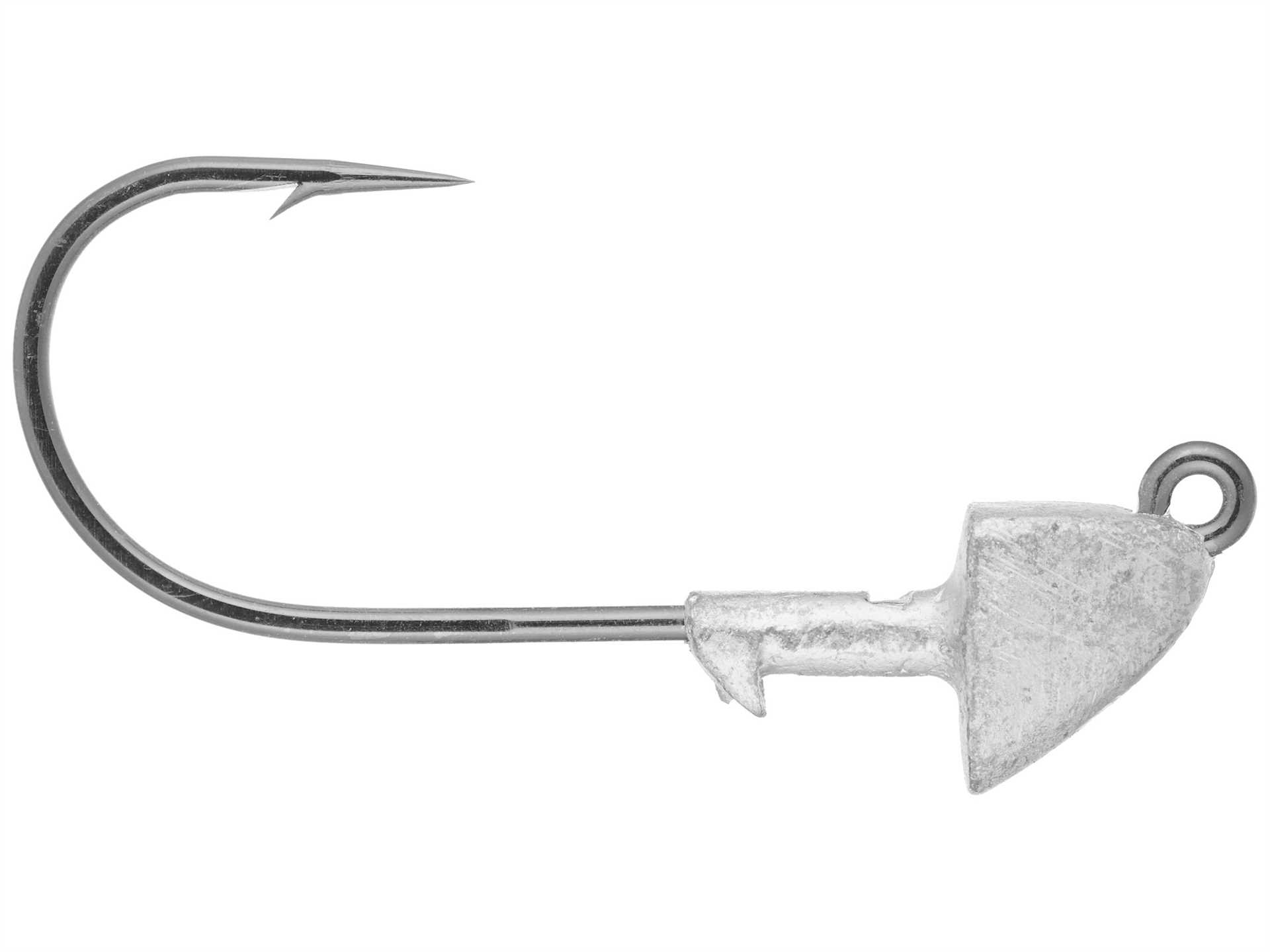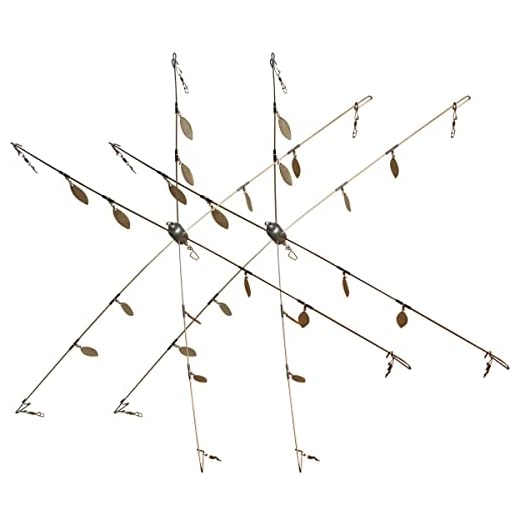
When targeting finicky fish with an umbrella setup, selecting the right components can make a significant difference. I recommend focusing on models that offer superior balance and stability in the water. This article will guide you through the top options available, ensuring that your rig performs at its best.
This piece is tailored for anglers looking to enhance their fishing strategy, whether you’re a seasoned pro or just starting. Detailed descriptions of various products will provide insights into what makes each option suitable for different environments and species.
In this article, I will outline the key features of successful alternatives, covering aspects such as weight, hook quality, and material. You’ll discover how these elements impact your presentations and catch rates. By the end, you will have a clear understanding of the most effective options to consider for your next fishing trip.
Best Jig Heads for Umbrella Rig
Choosing the right weights for an umbrella setup can significantly impact your fishing success. The effectiveness of this multi-lure system relies heavily on the type of weights used, which should complement the overall presentation.
When selecting weights, consider factors such as size, shape, and material. A streamlined structure can enhance the natural movement of the lures, while a heavier option may provide better depth control in windy or current-prone conditions.
Key Features to Consider
- Weight Options: A range from 1/8 oz to 1 oz is common, allowing flexibility depending on water conditions.
- Hook Size: Larger hooks can accommodate bigger lures, while smaller hooks are ideal for finesse presentations.
- Material: Lead is common due to its density, but alternatives like tungsten offer a smaller profile with similar weight.
- Eyelet Position: A horizontal eyelet can facilitate better movement, while a vertical eyelet may assist in a more vertical drop.
Experimenting with various weights can lead to discovering what works best in your fishing environment. Observing how different weights affect the lure’s action will guide you in making informed decisions for future outings.
Choosing the Right Weight for Your Umbrella Rig
Weight selection is a key factor in the performance of your fishing setup. The right amount of heaviness ensures that your rig achieves the desired depth while maintaining stability in the water. Generally, weights between 1/4 to 1 ounce work well, depending on the conditions and target species.
Consider water clarity, current strength, and the depth at which fish are located. In clearer waters or during calm conditions, lighter weights can create a more natural presentation. Conversely, in fast currents or deeper waters, heavier weights are necessary to maintain control and visibility.
Factors Influencing Weight Choice
- Water Depth: Deeper waters typically require more weight to reach the desired zone efficiently.
- Current Strength: Strong currents necessitate heavier weights to keep the setup in place.
- Target Species: Different fish species respond to varying weights, influencing your choice.
- Line Type: Heavier lines can handle more weight, whereas lighter lines may struggle.
Experiment with different weights to determine what works best for your specific fishing environment. Adjusting the weight can also affect the action of your lures, so be prepared to make changes based on fish behavior.
Types of Hooks for Optimal Performance
Choosing the right hooks is integral to achieving desired results while using multiple lures. Different styles of hooks can significantly influence the action and presentation of baits in the water. Understanding the variety available will enhance your fishing experience and improve catch rates.
There are several hook types tailored for specific techniques and conditions. Each type has unique characteristics that can affect how well the lures perform and how likely fish are to strike. Below are key types to consider:
Hook Styles
- Swimbait Hooks: Designed to accommodate soft plastic lures, these hooks often feature a wide gap to allow for better hook sets.
- Wide Gap Hooks: These hooks provide ample room for the bait, allowing for a more natural presentation. They are especially effective for larger lures.
- Offset Hooks: The unique angle of the hook point helps to reduce snags while promoting better hook penetration during a strike.
- Circle Hooks: Ideal for catch and release, these hooks are engineered to hook fish in the corner of the mouth, reducing injury.
When selecting hooks, consider the following factors:
- Size: Match the hook size to the lure and target species for optimal performance.
- Material: Choose hooks made from high-quality steel to ensure durability and resistance to corrosion.
- Point Design: Sharp and well-designed points lead to improved hook-up ratios, crucial for success.
By carefully selecting hook types and considering their attributes, anglers can maximize their effectiveness on the water and enhance their overall fishing strategy.
Material Considerations for Durability and Flexibility
Choosing the right materials is essential for enhancing both durability and flexibility in tackle designed for multi-lure setups. High-quality metals such as stainless steel or corrosion-resistant alloys provide significant strength while maintaining a lightweight profile, allowing for easier manipulation in water. These materials resist wear and tear, especially when exposed to saltwater environments.
In addition to metal components, the choice of rubber or silicone for the lure attachments plays a critical role. These materials offer excellent flexibility, enabling the lures to move naturally and attract fish effectively. The elasticity of rubber or silicone can also withstand repeated casting and retrieving, ensuring longevity.
Factors Influencing Material Choice
- Corrosion Resistance: Essential for longevity, especially in saltwater conditions.
- Weight: Lighter materials improve casting distance and reduce fatigue.
- Flexibility: Materials that can bend without breaking enhance the action of lures.
- Durability: Resistance to abrasion and impacts prolongs the usability of tackle.
Utilizing a combination of robust metals and flexible polymers can optimize performance. A well-designed rig not only attracts fish but also withstands the rigors of fishing conditions, making material selection a fundamental aspect of tackle preparation.
Color and Finish Options to Attract More Fish
Selecting the right hues and finishes can significantly enhance your success on the water. Fish are often attracted to specific colors based on water clarity, weather conditions, and the time of year.
Bright and flashy colors like chartreuse, white, and pink are particularly effective in murky water, while natural colors such as green pumpkin, brown, and shades mimicking baitfish work well in clearer conditions. Additionally, metallic finishes can reflect light and create an enticing flash that draws fish in.
- Bright Colors: Ideal for low visibility; high contrast against the water.
- Natural Hues: Mimic local baitfish; blend seamlessly in clear waters.
- Metallic Finishes: Create reflections; enhance visibility in varying light conditions.
- Glow Options: Effective in deep waters; can attract fish during low-light periods.
Experimenting with different combinations can yield surprising results. Pay attention to the behavior of fish and adjust accordingly. A well-thought-out color scheme can make all the difference in your fishing experience.
Best jig heads for umbrella rig
Features
| Part Number | SLW-Urig-6-2-2PCS |
| Model | SLW-Urig-6-2-2PCS |
| Warranty | 3 months |
| Color | 2 Pieces 6-arm Umbrella Rig (Silver) |
Video:
FAQ:
What types of jig heads are best suited for use with umbrella rigs?
When selecting jig heads for umbrella rigs, several types stand out. Round jig heads are popular because they provide a natural swimming action and are versatile for various soft baits. Swimbait jig heads, with a more streamlined shape, are designed for a smooth presentation in the water, mimicking baitfish effectively. Another option is the weighted swimbait hook, which allows for more flexibility in rigging and can enhance the action of the bait. Ultimately, the choice depends on the specific fishing conditions and the desired presentation.
How do I choose the right weight for jig heads on an umbrella rig?
Choosing the right weight for jig heads on an umbrella rig is crucial for achieving the desired depth and action. Lighter jig heads, typically in the range of 1/8 to 1/4 ounce, are suitable for shallower waters or when targeting fish in a more subtle manner. Conversely, heavier jig heads, such as 3/8 to 1 ounce or more, are ideal for deeper waters or when fishing in strong currents. It’s also important to consider the size of the umbrella rig and the water conditions; matching the weight to the overall setup will enhance the rig’s effectiveness. Experimenting with different weights can help determine what works best for the specific environment and species being targeted.








